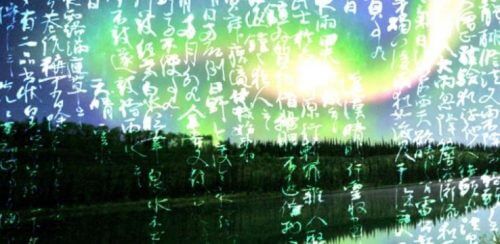In a collaborative effort between the arts and sciences, researchers at Kyoto University, the National Institute of Polar Research (NIPR) and the National Institute of Japanese Literature (NIJL) used historical documents to gain better insight into ancient solar event patterns

Ice cores and ancient sediments make it possible to gather clues about past weather and climate. But astronomical phenomena - such as solar flares or the aurora borealis - leave at best only weak and unremarkable environmental traces. So how can we accurately track ancient astronomical events?
Now, in a joint effort between the arts and sciences, researchers at Kyoto University, the National Institute of Polar Research (NIPR) and the National Institute of Japanese Literature (NIJL) have used historical documents to gain better insight into ancient solar event patterns.
Magnetic storms were recorded as a major aurora display in the Meigetsuki (Bright Moon Record, 1180-1241) on By Fujiwara no Teika from Japan and the Song Shi (History of Poetry, commissioned in 1343) from China gave researchers the ability to reconstruct the chronology of past astronomical events. Findings appeared in the journal Space Weather.
An early Japanese document of a long aurora – aurora events lasting two or more nights in one week – records such an event occurring on February 21-23, 1204 at Meigetsuki. says lead researcher Ryoho Kataoka from NIPR. “At the same time, in the Chinese Song Shi, a large sunspot was recorded on February 21. Such sunspots are evidence of the sun's enormous magnetic activity, including solar flares.
The researchers continued to look for signs of luminescence events between the years 900-1200 in Song Shi. "We found ten prolonged aurora events during this period. says Kyoto University historian Hisashi Hayakawa. "When these dates were compared to carbon data in tree rings, low levels of carbon-14 were recorded at the time of these events, indicating increased levels of solar activity - at the same time."
The team was also able to notice that aurora events were more common at the peak of solar cycles rather than at minimum, and that during less active solar cycles (1010-1050) no aurora was detected.
NIJL deputy director Tsunyo Terashima says the taika author focused on his role as editor of classics such as The Tale of Genji and Ogura Hyakuninisshu, works in which his literary and poetic skills played a key role.
"To be honest, his observations of the sky were mainly placed in the context of his fictional writing," Terashima explains. "And they were not valued for their scientific uniqueness. Now we understand that Meigetsuki provided accurate data on the sky conditions of the time."
"Using a combination of literature, tree rings and space observations, we revealed clear patterns in solar activity and astronomical events," says Kyoto University space researcher Hiroki Isoube.
"Today, strong solar storms can significantly disrupt the power grids and satellites, and we are more sensitive to solar events, and the insight gained through historical documents allows us to better predict the future and prepare for it."
